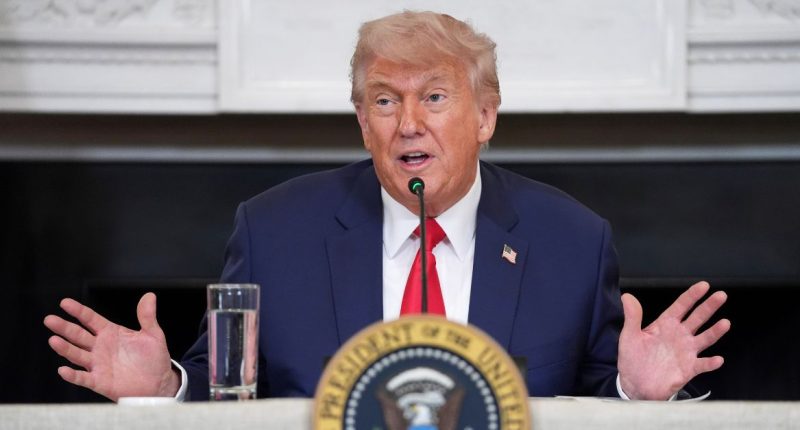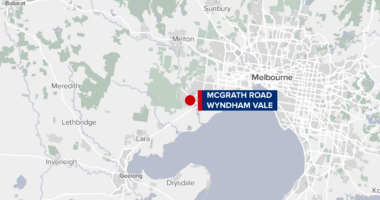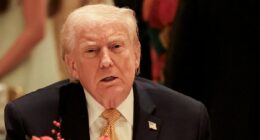Share this @internewscast.com
President Donald Trump addresses an “Invest in America” roundtable with business leaders at the White House on Monday, June 9, 2025, in Washington. (AP Photo/Evan Vucci)
The Trump administration is requesting the U.S. Supreme Court’s intervention in yet another recurring dispute over the president’s authority to dismiss political appointees.
On Tuesday evening, a federal appellate panel dealt the government a setback by affirming a district court decision that fully reinstated three members of the Consumer Product Safety Commission (CPSC) from the Biden era who had been previously dismissed.
In a unanimous 7-page order, the U.S. Court of Appeals for the 4th Circuit rejected a request to stay an injunction entered in June.
The earlier order bars the government from giving the firings effect, grants the plaintiffs access to agency resources, and orders the government to provide back pay and benefits to the plaintiffs and their staff.
Love true crime? Sign up for our newsletter, The Law&Crime Docket, to get the latest real-life crime stories delivered right to your inbox.
In early May, President Donald Trump, by way of individuals “purporting to speak” on his behalf, fired the trio by email.
The terse emails offered no criticism or justification whatsoever – simply stating they were “terminated effective immediately.”
The crux of the lawsuit is a dispute over whether Trump had authority to fire them at all, since they had yet to serve out the remainder of their fixed terms “after having been confirmed by the Senate.”
The plaintiffs – Mary Boyle, Alexander Hoehn-Saric, and Richard Trumka Jr. – claimed their firings, and subsequent efforts to fire their staffers, were unlawful and in violation of the Consumer Product Safety Act (CPSA), the originating statute that created the CPSC. The statute says CPSC members can only be removed by the president “for neglect of duty or malfeasance in office but for no other cause.”
In last month’s failed appeal to stay the injunction, and in Wednesday’s emergency application, the government essentially says such so-called “for-cause” removal language is unconstitutional.
The arguments track with those made in a series of similar cases earlier this year, when Trump fired appointed members of the Merit Systems Protection Board (MSPB), Office of Special Counsel, and National Labor Relations Board (NLRB).
After months of litigation, the nation’s high court, in a non-merits decision, gave Trump the power to effectively fire such appointees.
But the lack of a merits analysis seems to haunt the government.
Here, as in the earlier cases, a great deal of the legal analysis is focused on a 1935 Supreme Court case about the limitations on the president’s ability to fire appointed officials at will.
The case in question, Humphrey’s Executor v. U.S., stands for the idea that Congress intended to keep “quasi judicial and quasi legislative” agencies largely insulated from the whims of the president.
While the 4th Circuit lacks a majority opinion, a concurrence by Circuit Judge Wynn, a Barack Obama appointee, provides at least some of the panel’s reasoning for leaving the injunction in effect – and explicitly cites the Humphrey’s Executor standard in the very first sentence.
“The Constitution permits Congress, in furtherance of its legislative functions, to create independent agencies staffed by officers shielded from at-will removal—provided that such limitations do not impede the President’s ability to faithfully execute the laws,” Wynn writes. “Congress exercised that authority when it created the Consumer Products Safety Commission as a bipartisan, multi-member independent regulatory commission tasked with protecting the public against unreasonable risks of injury with consumer products.”
Wynn goes on to opine that the firings are “plainly in conflict with the textual language of the statutory removal protections” which “rendered the terminations legally ineffective.”
The judge also said pausing the injunction would harm the plaintiffs and the public due to the CPSC’s role in preventing injuries.
“So, here, the considerations of minimizing disruption and preserving the status quo favor permitting the Plaintiff-Commissioners to continue to perform their statutory duties while this appeal proceeds,” Wynn went on. “Simply put, allowing the Plaintiff-Commissioners to continue in their roles preserves, rather than disrupts, agency operations.”
Now, in the president’s appeal to the highest court in the land, the government is aiming to fight the battle on the terrain of disruption.
That is, while the government still maintains the “for-cause” removal language is unconstitutional, the procedural way the argument gets made is slightly different this time around.
To hear Solicitor General D. John Sauer tell it, the earlier decision in the case that allowed Trump to finally fire NLRB member Gwynne Wilcox should be considered controlling precedent – even though the merits of the case were not at issue.
In its 27-page emergency application, the government highlights several instances of discord that have occurred since the Biden-appointed members retook their seats on the CPSC.
For example, Trumka led the newly-reconstituted Democratic Party majority on the commission to try and pass a motion declaring “all CPSC actions taken while plaintiffs were removed to be ‘null, void, and of no effect,’ unless otherwise specified.” The government goes on to mention increasing strife among the CPSC ranks, describing an entire meeting called by Trumka, which the GOP-appointed members of the commission effectively boycotted. Sauer also says “one of the respondents has threatened agency staff” by referencing the district court order and all-but daring them to violate it.
“Respondents’ actions have thus thrown the agency into chaos and have put agency staff in the untenable position of deciding which Commissioners’ directives to follow,” the stay application argues. “None of this should be possible after Wilcox, which squarely controls this case.”
The application goes on like this, at length:
President Trump decided to remove three Commissioners who would otherwise make up a majority of the CPSC, and whose actions since their putative reinstatement only underscore their hostility to the President’s agenda. The district court’s order effectively transfers control of the CPSC from President Trump to three Commissioners who had been appointed by President Biden—even though President Trump now holds “the mandate of the people to exercise [the] executive power.” That plain-as-day affront to the President’s fundamental Article II powers warrants intervention now just as much as in Wilcox.
In one additional piece of the disruption puzzle, Sauer also argues some lower courts are thumbing their noses at the Wilcox ruling – complaining the court in the CPSC case “relegated Wilcox to a footnote.”
“Indeed, the district court’s decision in this case adds a new twist by challenging this Court’s authority under Article III as well,” the government’s application goes on. “Wilcox did not definitively resolve the merits, but it is a binding precedent on the application of the stay factors.”
















